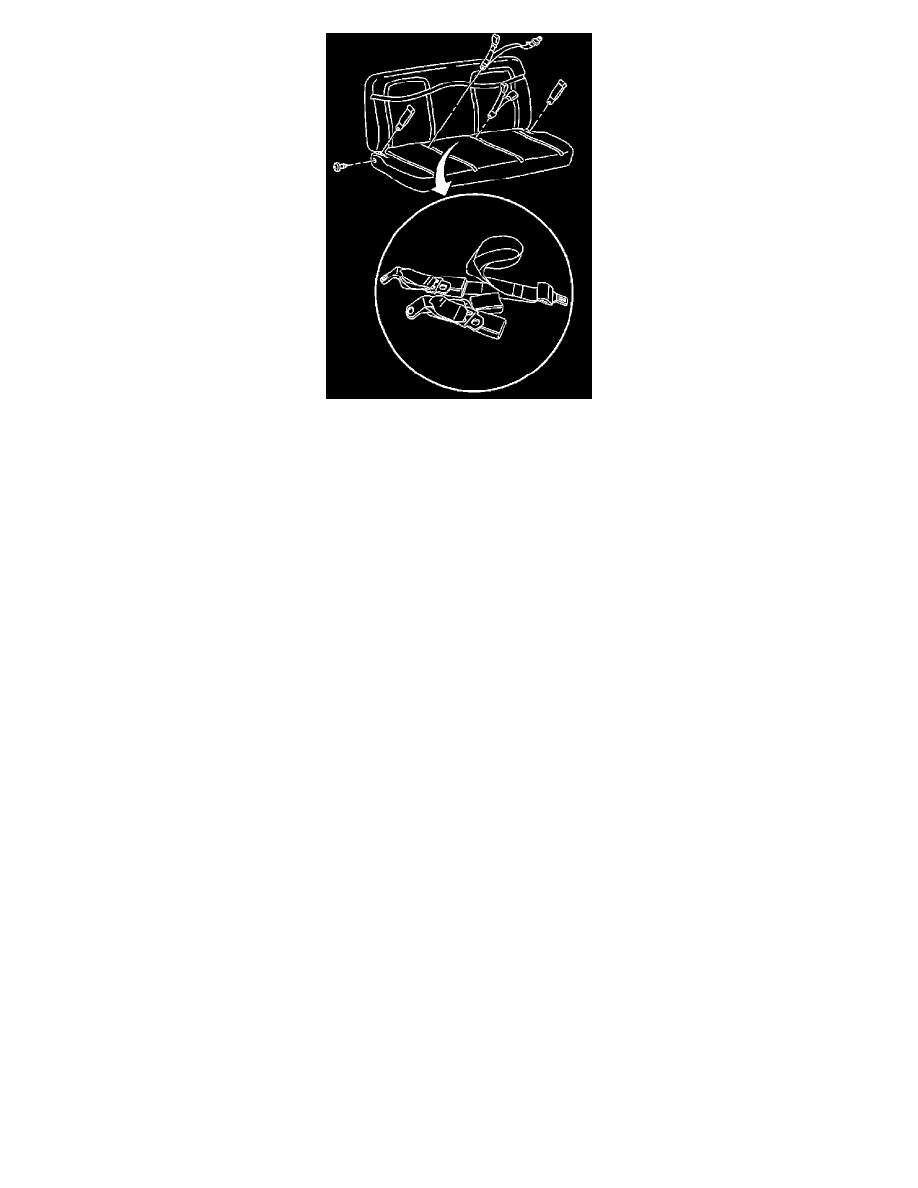Express 1500 AWD V8-5.3L VIN T (2004)

1.
Move the front seats to the full forward position.
2.
Release the bench seat from the floor. If necessary, see the vehicle's owner's manual for additional information.
A.
Locate the two pins located on the inboard sides of the bench seat. If the vehicle has floor mats, the pins will be located under a flap that has
been cut into the mat. The driver's side pin has a gray cap with a black "L" marked on it. The passenger's side pin has a black cap with a
white "R" marked on it.
B.
Pull the pin handle up to disengage the pin from the retaining clip, and then pull the pin out.
C.
Repeat this procedure on the other pin.
D.
Pull the seat rearward about 50 mm (2 in) and then lift the seat from the floor rails.
3.
Reposition (tilt) the bench seat forward in the vehicle to improve access to the lower rear backside of the seat.
4.
Release the J-strip(s) and hook and loop fastener(s) from under the rear of the seat cushion.
Important
Depending on the seating location, the seat belt buckle being changed may be attached to another buckle or a center lap belt with a bushing.
The new buckle being installed at that seating location will also have the other buckles or lap belts already attached. Therefore, it is not
necessary to remove the bushing (separate the buckles or lap belts).
5.
Remove the bolt attaching the seat belt buckle(s) to the seat frame.
6.
Route the seat belt buckle(s) being changed through the opening between the seat cushion and seatback.
7.
Install the new seat belt buckle assembly through the opening between the seat cushion and the seatback.
Notice
Use the correct fastener in the correct location. Replacement fasteners must be the correct part number for that application. Fasteners requiring
replacement or fasteners requiring the use of thread locking compound or sealant are identified in the service procedure. Do not use paints,
lubricants, or corrosion inhibitors on fasteners or fastener joint surfaces unless specified. These coatings affect fastener torque and joint
damping force and may damage the fastener. Use the correct tightening sequence and specifications when installing fasteners in order to avoid
damage to parts and systems.
8.
Install the seat belt buckle retaining belt to the seat frame.
Tighten
9.
Tighten the seat belt buckle retaining bolt to 40 Nm (30 lb-ft.).
10.
Repeat Steps 5-8 on the remaining buckles being replaced on that bench seat assembly.
